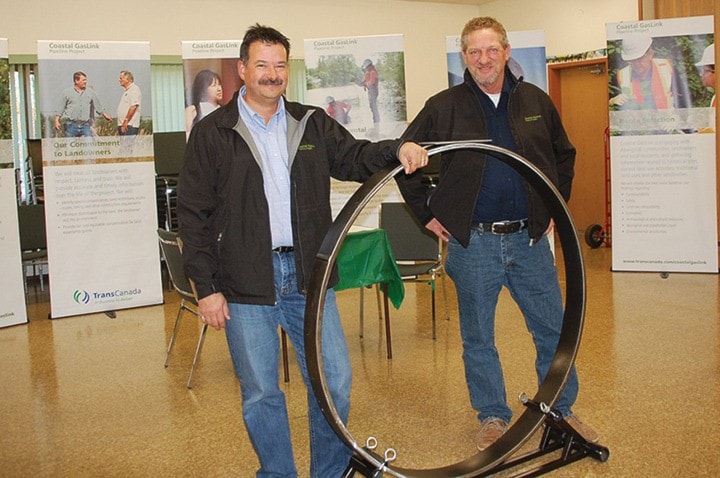Coastal GasLink Pipeline Ltd., a subsidiary of TransCanada PipeLines Ltd, is proposing a 700-km pipeline to take natural gas from the Groundbirch area near Dawson Creek, to a proposed gas liquefaction facility near Kitimat.
Construction is planned for 2015 and the primary purpose is to open new markets for B.C. and Canadian natural gas, said Bruce Wells, director of project planning and execution.
Coastal GasLink held an open house on Oct. 16 at the Houston Senior Citizen's Association Centre and collected resumes from a few people who came by asking about jobs.
Presenting the plans to the Houston council the same day, Wells said the project will benefit Houston,
paying about $17 million in annual tax payments that will go to regional districts, as well as doing business in Houston and providing jobs for the two to three years of pipeline construction.
Wells says the company will also invest in the community, do job fairs and engage people to find out local interests that fit with their investment policies.
The pipeline, which will be completely underground except for valve sites, has an environmental protection plan in place, both during construction and after, "to make sure they do it once and do it right," Wells said.

They will also monitor the pipeline 24 hours, seven days a week when it is running, and run programs in all the communities for public awareness and emergency response, he added.
When Councillor Jonathan Van Barneveld expressed concern about the cumulative affect of pipelines, Wells said that they have done their best to fit their route alongside other proposed pipeline routes.
Right now, Coastal GasLink is educating and getting feedback from communities, landowners and first nations that will be considered in the final plans, says Wells, adding that next year programs will focus more on environmental and engineering concerns.
They have contacted almost 600 landowners, over 400 face-to-face, and have talked to a total of 32 first nations, said Wells.
"To date, I can say that we have not had any opposition to the project," he concluded.
